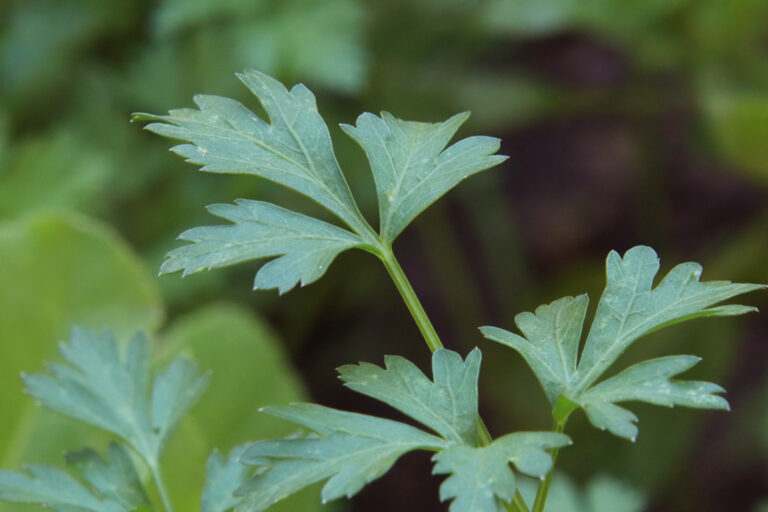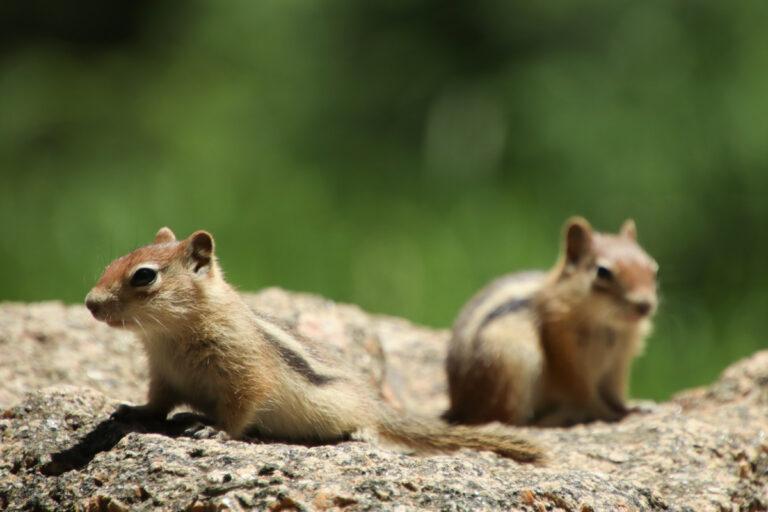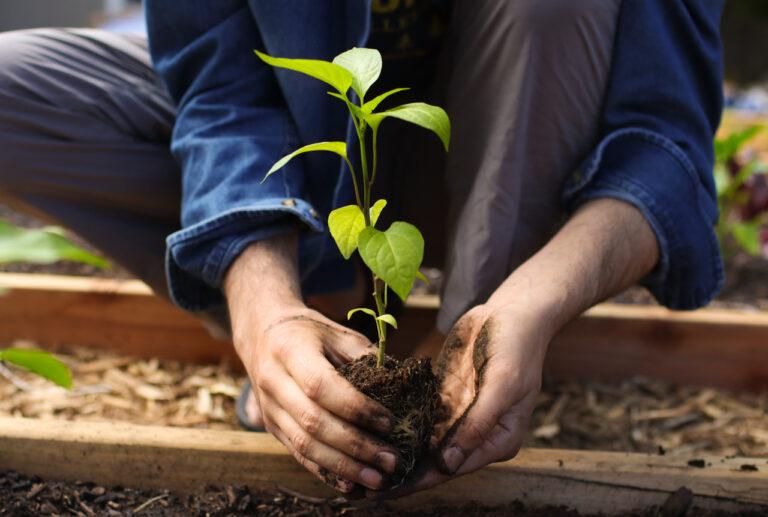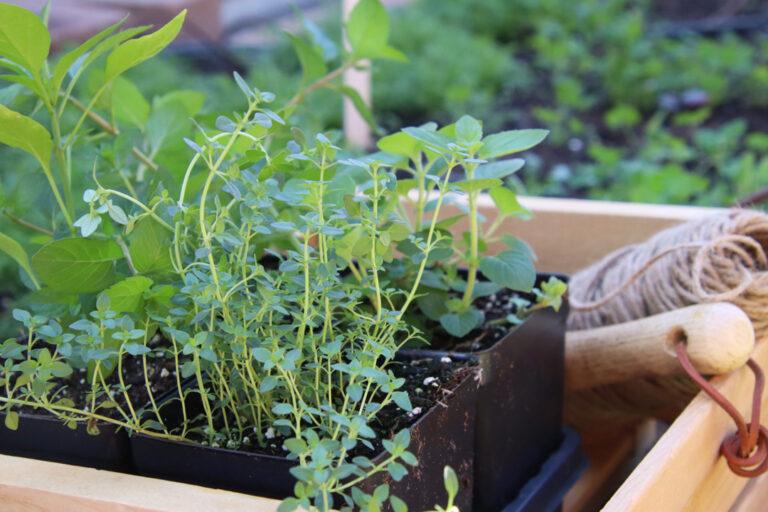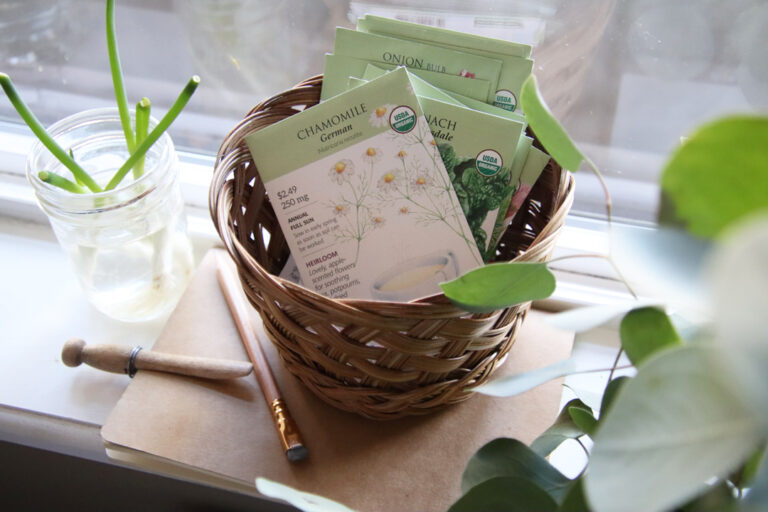Daisy vs. Sunflower: A Quick Guide

Daisy vs. Sunflower: What’s the difference?
It’s not unusual to confuse daisies and sunflowers. There are thousands of different varieties of flowers that are often grown in gardens and it’s not easy to keep them all straight.
A common question when learning about flowers is: what’s the difference between daisies and sunflowers? These beautiful flowers have some similarities that make them easily confused with each other, but there are a lot more differences than you think.
In short, while daisies and sunflowers are both in the same plant family Asteraceae, they are in different genera. Both flowers are commonly grown in backyard gardens, but daisies and sunflowers are largely different from each other.
Read on to learn the difference between daisies and sunflowers as well as tips for growing each and the best varieties to grow.

Quick Reference Chart: Daisy vs. Sunflower
| Daisy | Sunflower | |
| Lifespan | Perennial | Annual |
| Flower Color | White* | Yellow* |
| Bloom Time | Late spring to early summer | Late summer to early fall |
| Plant Family | Asteraceae | Asteraceae |
| Height | 2-3 feet* | Up to 6 feet* |
| Light Requirements | Full sun | Full sun |
* Based on most common varieties, may vary for different varieties.
Daisy vs. Sunflower: Quick Facts
Both daisies and sunflowers are in the Asteraceae family, also known as the aster family, daisy family, and sunflower family which includes almost 24,000 different plant species.
Both plants produce beautiful flowers that go to seed, which is their primary method of reproduction (also known as angiosperm).
Daisies are perennials, which means the plant goes dormant every winter and comes back each spring. Sunflowers are annuals, which means they go to seed and die each fall. The plant does not come back, but the seeds may grow new plants.
Their bloom time is different in most of the United States. Because daisies are perennials, the plants come up as soon as it is warm enough in the spring. The daisy then blooms in late spring to early summer and may provide consistent flowers until the first frost.
Sunflowers, on the other hand, are usually planted each year after the last frost. They grow throughout the summer and bloom in late summer to early fall. Once that flower head has died, the plant is finished blooming.

The Difference Between Daisies and Sunflowers
Daisies
Daisies are gorgeous perennial flowers that produce three-inch flower blooms. They are most often known for their white petals with a bright yellow center, though different daisy varieties come in a wide array of vibrant colors.
There are over 20,000 different types of daisies in the world. The traditional large white and yellow blooms are usually the Shasta daisy. Other common varieties include the gerbera daisy, oxeye daisy, English daisy, and African daisy.
Daisies originated in Europe and parts of Asia. They are not native to North America, but were introduced and are now a common garden plant.
Because the daisy is a perennial plant, they return year after year without new seeds being planted. Perennial plants are known to grow more slowly than annuals. Each year they spread, filling in a garden area.
Sunflowers
Sunflowers are a beautiful annual plant that produces a single bloom atop a tall, skinny stalk. They are known for how the plant rotates throughout the day with the sun so that the flower is facing the sun at all times.
A native to North America, sunflowers originated in the United States and Mexico. There are now over 70 different varieties of sunflowers.
Sunflowers can vary in size drastically. The largest varieties can grow over six feet tall and produce large flower heads the size of dinner plates. The smallest varieties produce four-inch blooms atop 16-inch stems.
Sunflowers are most often made up of a dark brown or black center with golden yellow petals surrounding it. This isn’t always the case, however; colors can also include lighter yellow, orange, red, and even purple or pink.
These large, yellow blooms are grown not just for their beauty, but also for their edible seeds. Sunflower seeds are grown for human consumption, sunflower oil production, and bird food. Sunflower shoots are also a popular and nutritious microgreen.
This post contains affiliate links. If you make a purchase through the links, I will earn a small commission at no cost to you. As an Amazon Associate, I earn from qualifying purchases. Read my full disclosure here.

The Similarities Between Daisies and Sunflowers
Both daisies and sunflowers prefer full sun to grow well. This means they grow the best when they are exposed to at least six hours a day of direct sunlight.
As they are both part of the Aster family, daisies and sunflowers are both composite flowers. This means that the center of the flower is made up of many tiny flowers that produce one seed each.
Daisies and sunflowers are both beautiful additions to any garden and they are relatively easy to grow. Because of this, both flowers are a popular choice for ornamental and cut flower gardens alike.
Tips for Growing Daisies
Daisy plants are best started indoors 6-8 weeks before your last frost date. They can be planted through direct-sow as well, but planting indoors gives them a head start.
Daisies grow best in zones 5-9. Those in warmer climates can grow daisies in the spring or fall and those in cooler climates can often grow daisies as annuals.
Because daisies are perennials, they grow more slowly than annuals and may not bloom their first year. Don’t be discouraged; they are growing deep, strong roots to have a healthy plant in the long run.
For best results, plant daisies in a sunny location. Daisies will grow the best with at least six hours of direct sun.
To have consistent blooms all summer long, it is best to deadhead the flowers when they die off. Cutting off the spent blooms before they release seeds encourages the plant to produce more flowers.
As perennials, daisies require generous water when the seedlings are getting established. The water can be tapered off over a few weeks. Once established, daisies are fairly drought tolerant. They do well in sandy soil but can be hardy even in rocky and clay soil.
To maintain nutrients in the soil, top-dress the daisies every fall or spring with a high-quality compost.
The Best Daisy Varieties to Grow
Note: Oxeye daisies are considered an invasive weed in North America. Invasive species can take over the natural landscape, out-competing native species and harming wildlife and insect populations. If you want to grow oxeye daisies, I recommend opting for an aster that is native to your area instead. There are many that resemble oxeye daisies.

Tips for Growing Sunflowers
Sunflower roots are sensitive to disruption, so it is best to direct-sow the seeds where you want the sunflower plants to grow. Seeds must be planted once there is no risk of a frost, so wait a week or two after your average last frost date. Your average last frost date is based on your USDA hardiness zone, which you can determine here.
Sunflowers prefer well-drained soil and full sun.
They need a lot of water to germinate, but once the plant is established, sunflowers do well with one inch of water a week. In very hot climates, they may require more.
The leaves will likely be droopy during the heat of the day; this is normal. If the leaves don’t return to normal once the cooler evening temperatures set in, give the plant some water.
If you have a lot of squirrels or other rodents in your area, you may want to protect the seeds from being eaten early on. The best way to protect your seeds is by covering them with an overturned jar or cup. This will protect the seed while it germinates and prevent the seedling from being eaten when it is tender and delicious. Once the plant outgrows the cup, the risk of it being eaten is reduced.
The Best Sunflower Varieties

More Asteraceae Family Flowers You Will Like
There are many different flowers in the same family as daisies and sunflowers that will liven up your flower beds! Don’t miss out on these beautiful options (many of them are native to North America!):
- Purple coneflowers
- Black-eyed Susan
- False sunflowers
- Blanket flower
- Chamomile
- Dahlia
- Goldenrod
- Yarrow
Now that you know the difference between daisies and sunflowers, you may want to learn more about gardening! Learn the 15 easiest-to-grow flowers or how to compost to kickstart your flower garden.


